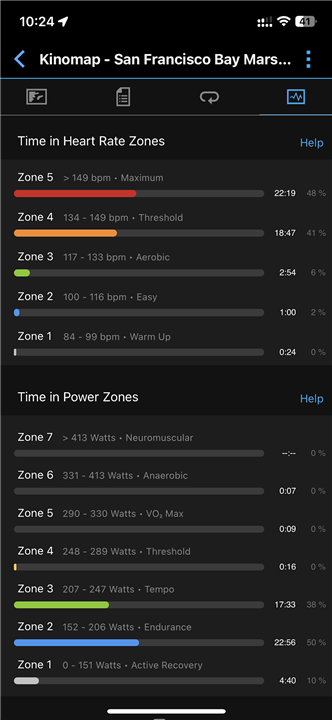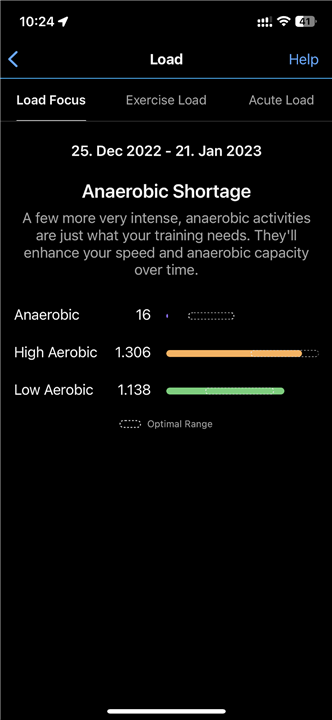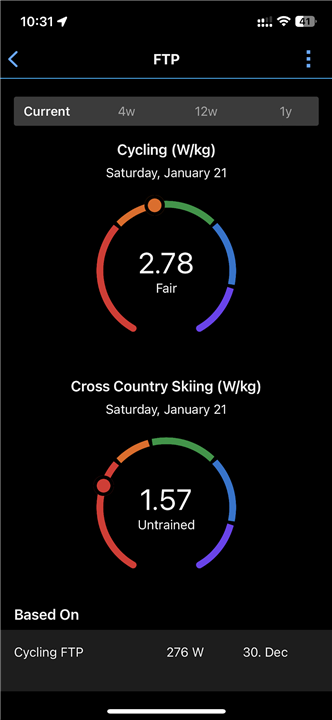Hi,
I have a Fenix 7xSS, and my training is mostly indoors at the moment (crosstrainer, rowing machine, indoor cycling). A typical indoor cycling training looks like this (significant share in HR zone 5), but still the Garmin app tells me that I do almost no training in the anaerobic zone.


Another interesting observation is that the FTP (despite manually entering 2.0 W/kg, which is also shown on the watch itself), the app always shows 2.78 W/kg, and the time in power zones is calculated accordingly - could it be this what messes up the the lack of anaerobic training shown in the app? BTW: I never did a single minute of cross country skiing in my life, so no idea where this estimation comes from.

Thanks for your help!
Sascha


